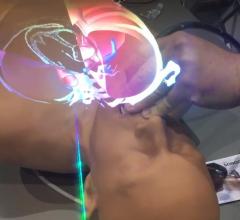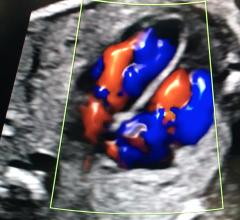
Discover the key features of cardiovascular structured reporting that drive adoption, including automated data flow, EHR integration, and customizability.
The growing volume of cardiovascular imaging is driving a perspective shift. Many health systems now recognize that aggregated imaging data is an asset rather than a liability. Consolidating traditionally siloed data can help organizations realize operational and performance benefits that can prove pivotal to demonstrating value in this era of value-based care.
Imaging departments are simultaneously realizing the value of standardized reports, which free clinicians from the time-consuming process of creating report templates. Although the transition to structured reporting requires a significant upfront investment of time and resources, the benefits are worth the effort: improved clinical efficiency and diagnostic accuracy, better resource management, and the end of double documentation.
In a highly regulated environment, providers need structured reporting to effectively manage their customized clinical workflows. When combined with a single-database cardiology solution, structured reports can improve communication, data aggregation, and imaging reimbursement.
Key Benefits of Cardiovascular Structured Reporting
Providers using a full enterprise suite of Cardiovascular Information Systems (CVIS), Hemo, ECG and structured reporting on a single database enter data only once.
The data automatically flows into the structured report, eliminating repetitive entry and reducing errors. A single-database system also reduces the need for interfaces that can contribute to data-integrity challenges and result in a higher total cost of ownership. Adopting structured reporting helps organizations:
Increase billing and reimbursement accuracy. Structured reporting provides standardized billing and coding keywords to help ensure that clinical documentation includes details that properly describe a procedure and why it was done. Structured reports help providers avoid missed and rejected claims.
Improve documentation quality and speed. By linking structured and unstructured data, organizations promote consistency, avoid double charting, and eliminate missing data. Structured reports use predefined sentences, procedure-notes helpers, and auto-populated procedure notes and patient data to facilitate complete procedure documentation. Reports are completed immediately after the procedure, as there is no need for a transcriptionist.
Focus on patient care and quality outcomes. Structured reports enable more automated data entry from an organization’s electronic health record (EHR) and modalities and standardize clinical workflows. They also enable the fast identification of missing data and out-of-spec results. Using analytics, organizations can harness structured data to monitor image-management attributes, such as storage occupancy status. Benchmarked results can help organizations implement best practices to ensure continuous improvements in clinical outcomes.
Automate registry and accreditation submissions. Submitting data to various cardiovascular registries and accreditation bodies can be time-consuming. Structured reporting lets organizations automatically gather all required data from the outset. Organizations can save weeks of manual work each year by simply mandating the collection of required data items during the reporting process and automating submissions.
Achieve Organizational Buy-in
To launch the transition to cardiovascular structured reporting, a cardiology department will first need to achieve organizational buy-in from three main groups: executive leadership, IT, and clinical users. With executive leadership, the cardiology department should highlight how the flow of structured data will help improve reimbursement accuracy, streamline staffing, and inform robust analytics for operational efficiencies.
Any new cardiovascular solution must meet an organization’s IT requirements for standardization, continuity of care, and supportability over time. A chosen structured reporting solution must be part of a unified Enterprise Imaging platform and compatible with an organization’s VNA, reference viewer, and other systems. To achieve buy-in with IT, look for a product roadmap that indicates future enhancements to help simplify complex infrastructure and reduce total cost of ownership, such as cloud architecture.
Of course, buy-in from clinical users is crucial to the solution selection and adoption process. Cardiologists want straightforward, structured reporting that supports their workflow and provides remote access and image linking. Receiving the cardiologists’ buy-in lets you invest the appropriate time in customizing structured reports instead of relying on dictation.
This is more challenging on the invasive side, and strong integration with an organization’s Hemo system is key. For technologists, the structured reporting solution should be able to automatically receive all the available data—from measurements to demographics—to reduce errors and minimize their review and prep time.
Select a Solution That Drives Adoption
Organizations preparing to implement cardiovascular structured reporting should select a solution designed to help ensure high adoption. Primarily, a structured reporting solution should be clinically robust and easy to use. Any chosen solution should enhance patient care while improving clinical workflow efficiency.
Structured reporting can be a powerful tool that seamlessly supports the cardiologist’s workflow. A flexible solution will allow organizations to tailor the workflow to every site, facility, and procedure sub-type, and will grant the cardiovascular department the ability to easily adjust workflows as needed.
Most importantly, a structured reporting solution must be able to receive and send data to the EHR in real time. Organizations should select a vendor that supports cross-launching the EHR and reporting system within the patient or study context, as this flexibility lets the organization decide which elements of its workflow will be driven by the CVIS and which by the reporting solution.
When implemented correctly, structured reporting has the potential to completely redefine standards of clinician data consumption and accuracy, raising the bar for an organization’s overall imaging ecosystem. To learn more about how Change Healthcare’s end-to-end cardiovascular portfolio leverages the EHR to help improve workflows, maximize productivity, and improve patient care, visit the Change Healthcare Cardiology site.
Related content on structural reporting:
Structured Reporting Systems Improve Patient Care and Data Management
WEBINAR: Imaging Trends: Designing Cardiac Training Programs through Innovation
Automated CVIS Cardiology Guidelines Saves Time, Improves Patient Outcomes
Emphasizing User Experience in the Adoption of Structured Reporting
Improving Consistency and Standardization With Structured Reporting


 January 19, 2022
January 19, 2022 





